- Administrator
- Albums and Singles
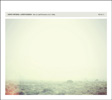 Considering Roden's recent album Proximities, an abstract, lo-fi piece of sound art, this is an odd step. Created through studio improvisations that were explicitly aimed at avoiding electronic instruments, it becomes a very different beast, which is made even more apparent once actual vocals appear, for better or worse.
Considering Roden's recent album Proximities, an abstract, lo-fi piece of sound art, this is an odd step. Created through studio improvisations that were explicitly aimed at avoiding electronic instruments, it becomes a very different beast, which is made even more apparent once actual vocals appear, for better or worse.
The vocal component comes in the form of Japanese jisei poems:texts written by monks on their deathbeds.Rather than read in the traditional sense, these poems were cut up and randomly sequenced, becoming less about words and more about the phonemic sounds that comprise them.
While there was an avoidance of electronic instrumentation throughout, there are still moments that mimic synthetic sounds, such as the droning mid-range and slightly dissonant layers of "Winds Through Bleak Timber."The pseudo-electronic sounds are mixed with obvious organic ones, namely acoustic guitar and what sounds like snapping wooden twigs.
"Fade Away Within" does away with the more identifiable elements and instead uses what I assume to be found percussive noises via field recordings and subtly twinkling wind chimes.It definitely has a drifting, droning quality to it, and is quite abstract, but there is an airy, open spaciousness to the sound that keeps it interesting.
This sense of space appears again on "Water Veins," where shimmering chimes are paired with quietly plucked strings, all of which hover delicately like clouds on a clear day.On the closing "Two Or Three Fireflies," the sparse notes and hollow found textures actually converge into the quietest piece here, which is no small feat given the three pieces preceding it.
Now, I must admit personally, I would have enjoyed this album more without the vocals.While there's nothing inherently wrong with the higher-register intonations used by both Peters and Roden, it just stylistically never works for me with male vocalists as opposed to female ones, making them more of a distraction.However, they are used sparingly throughout, especially on the final two tracks, so it’s not a deal breaker for me, but it does hinder an otherwise brilliant album for me.
Even with the vocals, Not A Leaf Remains As It Was is a beautifully sparse album, and its avoidance of electronic instrumentation makes for a more complex, nuanced experience.Trying to identify what is making the sounds leads to more deliberate listening, and thus becomes a beautifully engrossing record.
samples:
 
Read More
- Administrator
- Albums and Singles
The World Awake! / 11 Stueck is a new double album from Reformed Faction, the duo of Robin Storey and Mark Spybey.
The World Awake! was originally intended for a vinyl release and recorded from improvisations made on one day in November of 2009. 11 Stueck was compiled from improvisations made on December 1st 2009, with drummer Christian Alderson and bass player Oscar Ruiz Fernandez. The Austin Texas based musician Tony D’Oporto, aka Gnome, also appears on one track. The work references the writing of Henry Miller, in his aptly entitled essay, "With Edgar Varese in the Gobi Desert:"
"The World Awake! Just to repeat that to yourself five times a day is enough to make an anarchist of you. How would you awaken the world – if you were a musician? With a sonata for rusty tin openers? Have you ever thought about it? Or would you rather remain asleep?"
"We have been educated to such a fine – or dull – point that we are incapable of enjoying something new, something different, until we are first told what it’s all about. We don’t trust our five senses. We rely on our critics and educators, all of whom are failures in the realm of creation." Varese said, "What should be avoided; tones of propaganda. As well as any journalistic speculation on timely events and doctrines. I want the epic impact of our epoch, stripped of its mannerisms and snobberisms…. Imagination is the last word."
This first edition of The World Awake/11 Stueck is presented in a high-quality screen printed sleeve with printed slipcases for each disc. It is limited to 444 copies.
More information here.

Read More
- Administrator
- Albums and Singles
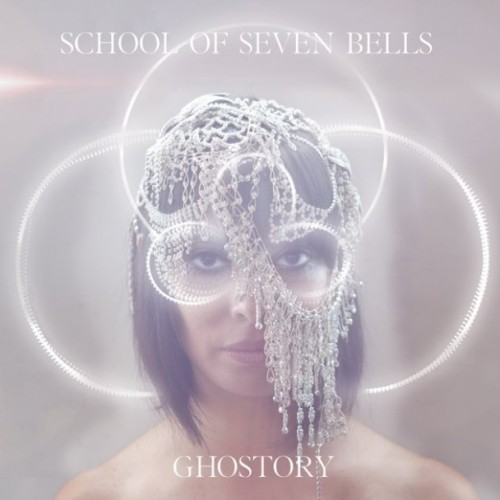 Now on their third full-length, School of Seven Bells have evolved into playing a sleek, manicured style of dream-pop constructed with the live experience in mind. While I have mixed feelings on the album start to finish, Ghostory does contain some powerful moments within its palette of sounds.
Now on their third full-length, School of Seven Bells have evolved into playing a sleek, manicured style of dream-pop constructed with the live experience in mind. While I have mixed feelings on the album start to finish, Ghostory does contain some powerful moments within its palette of sounds.
School of Seven Bells began five years ago as a collaboration between guitarist/producer Benjamin Curtis (ex-Secret Machines) and twin sisters Alejandra and Claudia Deheza (ex-On!Air!Library!). Its members met while opening for Interpol on their 2004 world tour, when I first saw both bands play in my college years. Since then, SVIIB have released two excellent albums—Alpinisms and Disconnect from Desire were each among my favorites in their years of release—and continued evolving since then. I have always been impressed by their live show, which trades the ethereal swoon of their albums for a louder, far more physical experience; the addition of a live drummer in 2010 only heightened the impact. Founding member Claudia Deheza left the band shortly thereafter, and Ghostory is SVIIB's first album without her input, leaving the door wide open for a stylistic departure.
As it turns out, SVIIB have simply taken their sound in a more pop/rock direction, rather than change the formula wholesale. The gently ascending, hypnotic melodies that were commonplace on Alpinisms ("Iamundernodisguise," "Prince of Peace") have been phased out, replaced by taut verse-chorus structures all around, each song streamlined for immediate impact and accessibility. The single exception, "Reappear," is a gorgeous piece of ambient songcraft, accented by a blanket of synths and floating vocal melody. The band's signature harmonies, which had been under the spotlight since On!Air!Library!'s self-titled album in 2004, are not frequently present, and when Deheza layers her vocals over one another with studio loops and effects, it feels somehow less organic with only one person in the studio. Mostly, I miss the woozy production of the band's early albums, which leaned toward early '90s shoegaze and dream-pop. Here, those ingredients have been reduced in favor of punchy, rock-centric production, courtesy of Ben Curtis' brother (and former Secret Machines bandmate) Brandon Curtis, as well as more prominent drums.
The standout tracks on Ghostory are those that match, and occasionally exceed, the band's previous experiments with pop song structures. First single "The Night" kicks off the album with style—a bouncy bass line and electronic drums accented by brushstrokes of guitar and Deheza's often unintelligible vocals. Later, "Lafaye" does it one better, its ethereal mood backed by flat-out gorgeous harmonies, its lyrics detailing Lafaye, the album's central character in a generally undetectable story arc: "You have the blood of intuition / with a name that branded you / and the familiar unfamiliar / would be the only thing you knew," before Deheza's cries of "Laaa-fayeeee!" envelop the chorus. "Low Times" and "White Wind" benefit most from the album's driving production, and are well suited to becoming live staples. The sharpest tune is "Scavenger," in which Deheza hurls incisive lyrics at a former lover (or perhaps bandmate): "I know what you are / you're a fake / you're a scavenger / too scared to take part / you only take / 'cause you're a coward."
The closing track on Ghostory, "When You Sing," is one of its best, but also leaves me feeling conflicted. My Bloody Valentine worship is nothing new for SVIIB—check the swooning, tremolo-warped guitars of "Face to Face on High Places" and "Windstorm"—but "When You Sing" takes this to a new level, because its galloping dance rhythm and swirling, euphoric blur of guitars is essentially a Xerox copy of MBV's "Soon." On one hand, I couldn't be more thrilled: "Soon" is one of my favorite pieces of recorded music, and when I turn off my brain and turn up the volume, "When You Sing" hits at least 85% of the same pleasure centers that "Soon" trail-blazed 20 years ago. Still, the whole song feels a bit unoriginal. On past albums, School of Seven Bells cherry-picked a few shoegaze tricks and incorporated them into a unique, compelling sound; "When You Sing" is more akin to loving plagiarism.
Samples:
Read More
- Administrator
- Albums and Singles
Julia Holter second album, Ekstasis, is a collection of songs written and recorded across the span of three years in Los Angeles, California.
Holter's songwriting stems from a mythological reverence of that which is incomprehensibly beautiful. Her Eating the Stars EP (2007) was a first attempt at musically transcribing this beauty, while discovering the honest enjoyment of unadulterated creativity. The anonymous authorship and shimmering gold detail of medieval illuminated manuscripts particularly inspired the ornately-orchestrated pop song mystery of Stars. Holter's debut album Tragedy (Leaving Records, 2011) embraced similar strains of shimmer, but used sparser textures in a narrative context.
Ekstasis marks a return to the playful searching of Stars, but guided by newly-learned disciplines, slightly better technology, and nearly limitless home recording time. Formative experiences at Cal Arts studying with Michael Pisaro and in India singing with harmonium under guru Pashupati nath Mishra marked a slight detour for Holter in what started as a more traditional composition route. The trajectory leading to the creation of Ekstasis suggests her thirst for knowledge and experience.
While Ekstasis reflects the conventions of her classical training, the album is also uncannily, if unknowingly, poppy. Holter's approach to crafting the songs of Ekstasis centered around what she describes as, "open ear decisions: what seemed to sound best for that moment." This blindness to reference unintentionally steers Ekstasis along the experimental pop spectrum most commonly associated to New York's Downtown music micro-universe of the 80s, specifically the works of Laurie Anderson and Arthur Russell.
With the blindness that leads Ekstasis, there are also many compositional methods at play. "Marienbad" was built while playing around on a Fender Rhodes with imagined imagery of topiary gardens and scenes from the song's film namesake in mind. The entirety of "Boy in the Moon" - the Casio SK-1 noodles, melody, and lyrics - was improvised over a seven minute catharsis. The melody and lyrics for "Four Gardens" were written spontaneously while rearranging an older song on a loop pedal for a live performance. "This is Ekstasis" contains a bass line built from a medieval isorhythm technique, allowing it to maintain a sense of repetition, but shift slightly with every turn.
There is a unique story and approach with each song, but all are united by the magnetism of the medieval manuscripts and Holter's "desire to get outside of my body and find what I can't define." It took Holter stepping outside of her solely self-written and recorded body of music to engage fellow Los Angeles musician and friend Cole M. Greif-Neill in the final phase of Ekstasis. Greif-Neil added perspective and brought out the greatest sonic potential that each song secretly contained. Holter says, "The first time I heard his mix of 'Marienband" the garden became so rich. Suddenly there were bright greens, the statues' edges defined, the fountains pouring..."
Ekstasis is an album indulged in these beautiful, simple, unfolding life mysteries. "All of these fleeting images and muses are so important," says Holter. "As with the manuscripts, when I see them, I hear voices. I am continually following the voices in the gold leaf. I can't know them, but I will follow their beautiful song."
Julia Holter's Ekstasis was released on March 8th, 2012 on RVNG Intl. in 2xLP, CD, and digital formats.

Read More
- Administrator
- Albums and Singles
 Volcano the Bear continue their esoteric but quickly comprehendible sounds and structure via this lathe-cut 8" single, the debut release on the Alt.Vinyl label. This is the second piece of seven inch VTB vinyl in a many months to come out of the North East of England, and shows the band investing solid musical experiments with new labels, outside of their regular album schedule.
Volcano the Bear continue their esoteric but quickly comprehendible sounds and structure via this lathe-cut 8" single, the debut release on the Alt.Vinyl label. This is the second piece of seven inch VTB vinyl in a many months to come out of the North East of England, and shows the band investing solid musical experiments with new labels, outside of their regular album schedule.
The hybrid sound of the plucked strings on the verge of retirement and moaning wind instrument that begins "My Favourite Lungs" has a spindly spidery European / British sound. Skipping the needle from the start to the end of this track, while not advisable, shows a song utterly removed from its original sounds. A building gnawed-at line of plucked strings and (what could be) an electronic Rhodes take the song in the direction of a huge exploding kick-up-the-arse finale. Ever the non-conformists "My Favourite Lungs" never reaches this point, stopped dead in its tracks by the band.
"Massive Furniture Invasion" is ripe for soundtrack picking by some bearded Hollywood mogul. The band’s ability to match a tune that can stand up by itself with odd instrumentation is ideally constructed for thematic purposes. These short melodic themes are then deconstructed, nightmarish strands pulled over the original piece. The treble calls and squalls are like a mass of moving parts, the song settling into a loose limbed whistling march through their local graveyard.
samples:
 
Read More
- Administrator
- Albums and Singles
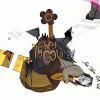 This album aims to recapture a childlike innocence and wonder by combining cartoon sounds with more exciting and grown up arrangements. The result is an enjoyable album that is like bubble gum for the ears, fun at first but it loses its flavor after a short time.
This album aims to recapture a childlike innocence and wonder by combining cartoon sounds with more exciting and grown up arrangements. The result is an enjoyable album that is like bubble gum for the ears, fun at first but it loses its flavor after a short time.
Ache
Jab Mica Och El have captured the playful feelings of childhood well. It’s hard not to bounce on the spot when listening to songs like “Biohjelm Light Speed.” The rhythms aren’t complex but the layering of sounds is, this gives a nice effect of being able to follow the rhythms perfectly easily but there’s enough detail to the pieces to prevent them getting too boring too quickly. There are lots of instruments being used and most of them get treated and chopped up (well the audio gets chopped up, not the instruments) by the duo which gives a lot of fun sounds. “Haircut from the Above” is a good example of this, there are all sorts of brass instruments, guitars and percussion being used as well as many mystery sounds that could be anything from toys to the same instruments put through a load of effects.
This is not music that I would sit down and listen to on headphones in order to ruminate on its finer points. It’s just a welcome bit of fun, fun being a word foreign to most serious musicians. As ABC Hej I’m Cola is only half an hour long, I found it is the perfect length to put on while doing something else, especially something boring (as it isn’t very intrusive so it is easy to concentrate on something else) or while cooking (although I did make a bit of a mess trying to stir fry in time to the music).
However, it’s easy to overdose on the music here. While, as mentioned above, there are a lot of interesting sounds used on the album, the simple song structures means that the pieces can sound a bit stale after a few listens. Taking a break for a few days allowed me to go back and enjoy it but I wonder what sort of lifespan this album will have. For the meantime I will enjoy it and even if I grow tired of it at least I will have gotten some value from ABC Hej I’m Cola.
samples:
Read More
- Administrator
- Albums and Singles
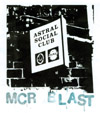 This might be heresy to some folk out there, but Neil Campbell’s work as Astral Social Club far outweighs that of anything done in his time with either the A-Band or Vibracathedral Orchestra. The floating membership of Campbell’s club is bolstered here by Arttu Partinen, a member of Finland’s brickheaded jamsters Avarus. One side of this lathe falls flailing but focused into the pit while the other still clings to the top rung of Jacob’s ladder.
This might be heresy to some folk out there, but Neil Campbell’s work as Astral Social Club far outweighs that of anything done in his time with either the A-Band or Vibracathedral Orchestra. The floating membership of Campbell’s club is bolstered here by Arttu Partinen, a member of Finland’s brickheaded jamsters Avarus. One side of this lathe falls flailing but focused into the pit while the other still clings to the top rung of Jacob’s ladder.
The opener, "MCR Blast One", begins as a knotty wash of competing drones and vocal wails smashed into with Mascis/Young riffs. On this release, Astral Social Club manage to force a river-dredged rainbow release through a tiny funnel letting it explode out the other end. A swooping choir of Neil Campbells fills the mid-range of this cut, the top end exploded out by spaceships with busted taillights, ripping open the air. The homemade / primitive nature of their sound never short-changes the listener with straightforward noise or improv clichés.
Like a great brass coloured circling ring “MCR Blast Two” swirls around and sinks further into itself loop after loop. Feedback seagull cries are interleaved through the mashed swooning raga and patterns of wooden percussion patterns. Counter melodies like snake charmer riffs come through like excerpts from the Radio Nepal series, except captured in a mancunian basement instead of a sweaty apartment. Eagles nest calls tear through the blustery weather of layers and chimes to create an electric sprawl of sounds.
samples:
Read More
- Administrator
- Albums and Singles
 This reissue of Jeremy Schmidt’s album as Sinoia Caves is a nice homage to the analog synth pomp of '70s prog and psychedelica, from the music right down to the fonts used on the sleeve. The music is excellent but The Enchanter Persuaded isn’t intended as a manual in how to shake things up using a synthesiser; it’s a straight up tribute to synths as how they used to be played.
This reissue of Jeremy Schmidt’s album as Sinoia Caves is a nice homage to the analog synth pomp of '70s prog and psychedelica, from the music right down to the fonts used on the sleeve. The music is excellent but The Enchanter Persuaded isn’t intended as a manual in how to shake things up using a synthesiser; it’s a straight up tribute to synths as how they used to be played.
Brah
The otherworldly “Dwarf Reaching the Arch Wonder” sounds like the celestial atmospheres of Hawkwind or Acid Mothers Temple stripped of everything bar the synths. Washes of synthesiser swim around the room, gentle drones and tinkling chimes color the piece further. It is very dated sounding but that isn’t a problem because it is so damn good. It slowly builds up and up like it’s moving outwards and upwards through the heavens, the album could finish after this one piece and I’d be happy (and putting the track on repeat).
Luckily the rest of The Enchanter Persuaded is of a similarly great caliber. Schmidt doesn’t stick to the same formula but moves around some classic synthesiser styles, exploring the versatility of the analog synth. “Through the Valley” has elements of Mogwai and Kraftwerk with its slow, interlocking melodies and vocoder laced vocals. The pieces all are elegantly simple, allowing the synthesisers to breathe and using other instruments and voices sparingly to highlight the beauty of a good synth. Schmidt shows that he is highly proficient at using a synth but doesn’t show off with Rick Wakeman style keyboard histrionics. The album climaxes with the epic “Sundown in the New Arcades (Milky Way Echo)” which revisits the interstellar enormity of the opening track. Sounds like strange animals calling across vast distances make the piece disconcerting and unsettling, it is like there is something on the other side of the speakers trying to get out.
The Enchanter Persuaded sounds like a lost classic by some synthesiser obsessed eccentric from 1973. It is a fantastic piece of work and it definitely deserves this reissue to get it to a wider audience. Although it is a shame this was released on CD, I think a vinyl only release would have really suited the aesthetic of the album. At least the CD will survive more wear and tear from the repeated plays that I plan to give it.
samples:
Read More
- Administrator
- Albums and Singles
Recently freed up from the tyranny of AOL Time Warner Elektra, Stereolab have seized the opportunity to get some things off their chest. Oscillations from the Anti-Sun, the compilation issued in the beginning of the year is perhaps one of the most generous single-artist collections ever, featuring all the band's music videos and a number of odd other video appearances on one DVD along with three CDs of music from out of print singles and stickers featuring replicas of the original covers.
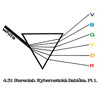 Now that everybody can be just about caught up, it's new single time. The first of the trio features two versions of the same song. "Kybernetická Babička" is peppy and bright, but the surrealistic lyrics of Laetitia Sadier is replaced by a bunch of "ahhh"s. While it is pleasant, it is rather forgettable and almost unnecessary to have two sides of nearly the same thing. Perhaps they're saving it for another car commercial or film soundtrack, but I have been far more impressed with other Stereolab instrumental grooves in the past.
Now that everybody can be just about caught up, it's new single time. The first of the trio features two versions of the same song. "Kybernetická Babička" is peppy and bright, but the surrealistic lyrics of Laetitia Sadier is replaced by a bunch of "ahhh"s. While it is pleasant, it is rather forgettable and almost unnecessary to have two sides of nearly the same thing. Perhaps they're saving it for another car commercial or film soundtrack, but I have been far more impressed with other Stereolab instrumental grooves in the past.
 The second single is perhaps the most enjoyable, at least for me anyhow. "Plastic Mile"starts off in an almost uneasy way but two minutes in, the entire song shifts and transforms into full-form Stereolab bliss mode. Swrling keyboard and guitar melodies are backed by a classy brass sound, sprinkled with Sadier's vocals providing both melody and harmony. Similarly, "I Was a Sunny Rainphase" opens with a strongly established upbeat melody and makes a big detour as well.
The second single is perhaps the most enjoyable, at least for me anyhow. "Plastic Mile"starts off in an almost uneasy way but two minutes in, the entire song shifts and transforms into full-form Stereolab bliss mode. Swrling keyboard and guitar melodies are backed by a classy brass sound, sprinkled with Sadier's vocals providing both melody and harmony. Similarly, "I Was a Sunny Rainphase" opens with a strongly established upbeat melody and makes a big detour as well.
 The third single is more along the lines of the retro-pop Stereolab have tried before, with a driving Phil Spector influenced pulse, bouncy basslines and socially optimistic lyrics ("we can learn to respect each other") on "Interlock.""Visionary Roadmaps" on the flipside is equally paced and also as enjoyable, but with an '80s-esque pick-struck bassline that isn't common for the group. The duality is familiar territory when it, like the songs on the second single, shifts into a completely different song for the last minute or so.
The third single is more along the lines of the retro-pop Stereolab have tried before, with a driving Phil Spector influenced pulse, bouncy basslines and socially optimistic lyrics ("we can learn to respect each other") on "Interlock.""Visionary Roadmaps" on the flipside is equally paced and also as enjoyable, but with an '80s-esque pick-struck bassline that isn't common for the group. The duality is familiar territory when it, like the songs on the second single, shifts into a completely different song for the last minute or so.
All three singles are delightful and a very cool thing for the fans to be buzzing over. Additionally, vinyl singles command a certain attention because when the approximate five minutes are done, they need to be flipped over. If these singles are slight detours from the album then I eagerly await the band's next record, probably far more excitedly than I have in recent years.
samples:
Read More
- Administrator
- Albums and Singles
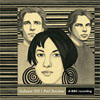 Peel Sessions releases have classically served a purpose only for thecollectors or die-hard fans but I can safely say that this release isan essential key to anybody's Galaxie 500 collection and should not be missed.
Peel Sessions releases have classically served a purpose only for thecollectors or die-hard fans but I can safely say that this release isan essential key to anybody's Galaxie 500 collection and should not be missed.20|20|20/Ba Da Bing!
I'm not trying to make an enemy of anybody in this review but I have to be completely honest with my feelings.
First off: Kramer's production can't hold a candle to the fantastic jobthe BBC engineers did in capturing Galaxie 500 live in thestudio. The band here sound much more like seasoned veterans thanon the original Rough Trade albums. The instrumets areappropriatelytreated, spaced, and the band seems far more comfortable with theirinstruments and comfortable with each other rather than thesometimes awkward and distant sounds and borderline clumsy productionof the albums. The charm isn't lost, however, which bringsme to my second point. Although every member of Galaxie 500 I havemet have been the sweetest, nicest people, nobody's post-Galaxie 500project has the charm, magic, or relevance that Galaxie 500 hadtogether.
Out of eight songs contained, four are cover tunes: Sex Pistols'"Submission," Young Marble Giants' "Final Day," Buffy Saint Marie's"Moonshot," and their classic show ending "Don't Let Our Youth Go toWaste," originally by fellow Bostonian indie rock legends, Jonathan Richman/ModernLovers.
Recorded at two sessions in 1989 and 1990, this release is a fantasticdocument of how well they could actually play together, and not someinappropriately romanticized notions of a young band faced with thechallenges of evolution and improvement. Dean's guitarbreaks, Naomi's melodic bass lines, and Damon's drum fills on a songlike "Flowers" is all the evidence needed to know that there wassomething special going on, and that the band seemed to perfect theirsongsafter recording them in the studio, once they were on the road.
With all due respect to James Murphy, "I was there," being fortunate tohave seen Galaxie 500 before they split. While I am still in lovewith their music I can accept that they remain in the past: I'm notlistening to unearthed gems like this and the double DVD anxiouslyawaiting a reunion tour.
samples:
Read More
- Administrator
- Albums and Singles
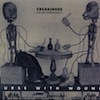 This strange mix of early '90s work and more recent material, showcases some of the many moods of Steve Stapleton. Classic cut-and-paste insanity from Nurse With Wound’s middle period has been paired with some of Stapleton’s powerful ambient vocal pieces from the last few years. This compilation does not make much sense on paper and perhaps is a little misguided in terms of its scope but it does sound brilliant from every angle.
This strange mix of early '90s work and more recent material, showcases some of the many moods of Steve Stapleton. Classic cut-and-paste insanity from Nurse With Wound’s middle period has been paired with some of Stapleton’s powerful ambient vocal pieces from the last few years. This compilation does not make much sense on paper and perhaps is a little misguided in terms of its scope but it does sound brilliant from every angle.
Considering Creakiness was originally a split with the group Spasm, it would have been nice to have the original split LP back in print especially considering the Spasm side was produced by Stapleton. Regrettably the Spasm material has been left off this collection and only the Nurse With Wound material is included (and the NWW side has been in print since the split LP on Sugar Fish Drink). It would be great if there were plans to reissue Spasm’s contribution along with their Meating Disorder EP if anyone out there is reading this who can make it happen.
However, regarding the material that is actually on this disc, "Creakiness" is a classic piece of Nursey collage work that does deserve the reissue. Disorientating ambience gives way to a whirlwind of Looney Tunes sound effects such as Roadrunner and Porky Pig. While this oddness is entertaining on its own, it’s when Stapleton takes the chaotic mass of sound and suddenly loops what sounds a pinball machine to form a terrific beat. It is possible to hear how Stapleton would work this hard rhythmic structure onto his next work, 1992’s Thunder Perfect Mind. "Creakiness" is a lot more forgiving than Thunder Perfect Mind, combining the whimsical with the rigorously alienating.
Strangely, the rest of the compilation jumps forward over ten years in time to cover material from mid-2000s, in particular recordings from the Echo Poeme Sequence sessions. However, the Echo Poeme Sequence pieces are strangely incomplete; why parts one and three are included but not complemented with part two (which altogether would have made a great release on its own) is beyond me. That said, the parts included here are the most difficult to find (one was a limited edition 7" and the other was a free CD-R given to members of the audience of the Salt Marie Celeste shows in Vienna) so at least there is some sense to including them on this compilation.
My main criticism of the two parts of "Sand Tangled Women" (the third in the Echo Poeme Sequence) still stands; the pieces develop nicely to a point but I feel they end prematurely and leave the pieces in limbo. Yet this release is a major improvement over the 7" in that the music here sounds perfect. The original 7" pressing was awful, pressing problems had persisted throughout its production and the final product was adequate at best. "Little Dipper Minus Two" on the other hand, remains one of Stapleton’s modern classics. The piece develops beautifully over time and spreads its tendrils like a dream in a sleeping mind. The two female voices which seem to be both addressing each other and no one bring to mind the washer women of Finnegans Wake who respectively turn into a stone and a tree. That same illogical logic is at play here, human forms drifting into matters and matter beyond the norm as their voices warp into resonances à la Alvin Lucier.
The compilation finishes with one of the two tracks from the Having Fun with the Prince of Darkness 7" from 2004. "A Perfectly Natural Explanation" (originally "…Expectation" on the 7") was originally paired with a remix of "Penis Fruit Loop" but that remix has been omitted. While "A Perfectly Natural Explanation" is good but does not really fit, it veers closest to "Creakiness" but not sufficiently so for it to feel like anything apart from filler (although that’s easy to say when I already own the single).
On one hand, the music is great and deserving of a reissue. On the other, the track listing is bizarre and I feel that perhaps an expanded reissue of the Sugar Fish Drink compilation and an Echo Poeme Sequence box set would be more apt. However, it’s not in Stapleton’s modus operandi to conform to expectations so perhaps this compilation is as much of a Nurse With Wound statement as the sonic material itself.
samples:
 
Read More

